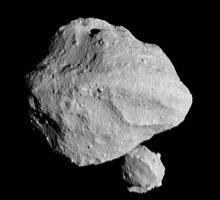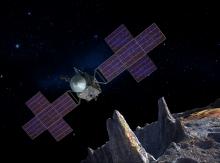Listen to today's episode of StarDate on the web the same day it airs in high-quality streaming audio without any extra ads or announcements. Choose a $8 one-month pass, or listen every day for a year for just $30.
You are here
Impact!
About eight million years ago, a big space rock slammed into the Atacama region of Chile, near the Pacific coast. The impact melted the sand and dirt and blasted it high into the sky. As the debris fell back to Earth, it formed dark balls of glass about the size of your little fingernail. Today, thousands of them are scattered across hundreds of square miles of desert.
Geologists discovered the glass balls a few years back, and confirmed their origin this year. The beads contain a lot of iron and other elements that likely came from the space rock.
Researchers haven’t found the impact crater that was gouged by the impact, even though it should be at least a mile across. It might have been filled in by blowing sand.
Wind, rain, and the motions of Earth’s crust probably have erased many other impact craters as well. Yet scientists have logged about 200 confirmed craters, and they’re still finding new ones. The craters are tough to see. But drilling into them reveals that rocks below the surface have been crushed and churned by a powerful blow.
One possible recent discovery is the Brushy Creek structure in Louisiana, which is more than a mile wide. Another is Ora Banda in Western Australia, which is three miles wide.
Neither has been confirmed as an impact crater. But scientists are doing more research to prove that both were created by collisions with space rocks — like the one that sprinkled round beads across Chile eight million years ago.
Script by Damond Benningfield






